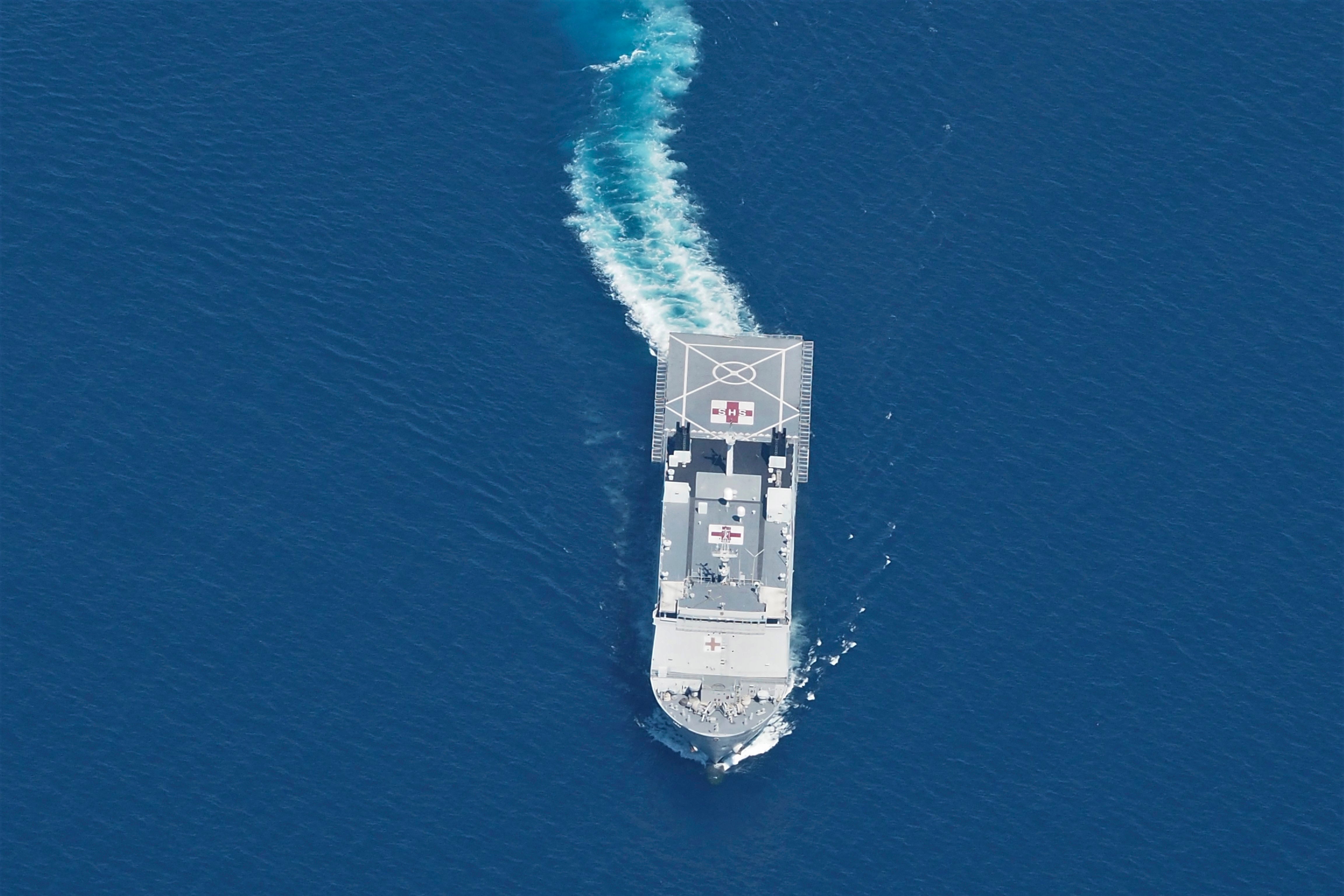Worries grow about Indonesian sub's crew as oxygen dwindles
Rescuers are continuing an urgent search for an Indonesian submarine that disappeared two days ago and has less than a day’s supply of oxygen left for its 53 crew

Your support helps us to tell the story
From reproductive rights to climate change to Big Tech, The Independent is on the ground when the story is developing. Whether it's investigating the financials of Elon Musk's pro-Trump PAC or producing our latest documentary, 'The A Word', which shines a light on the American women fighting for reproductive rights, we know how important it is to parse out the facts from the messaging.
At such a critical moment in US history, we need reporters on the ground. Your donation allows us to keep sending journalists to speak to both sides of the story.
The Independent is trusted by Americans across the entire political spectrum. And unlike many other quality news outlets, we choose not to lock Americans out of our reporting and analysis with paywalls. We believe quality journalism should be available to everyone, paid for by those who can afford it.
Your support makes all the difference.Rescuers continued an urgent search Friday for an Indonesian submarine that disappeared two days ago and has less than a day's supply of oxygen left for its 53 crew.
The KRI Nanggala 402 went missing after its last reported dive Wednesday off the resort island of Bali and concern is mounting the submarine may have sunk in waters too deep to reach or recover. President Joko Widodo has asked all Indonesian people to pray for the crew’s safe return, while ordering all-out efforts to locate the stricken submarine.
Two ships left a nearby port Friday morning to take part in the search. More than 20 navy ships, two submarines and five aircraft were mobilized for searches on Thursday and similar massive search operations were expected Friday.
Singaporean and Malaysian rescue ships were to arrive in the area from Saturday to Monday, and other nations have offered assistance.
“Our main priority is the safety of 53 crew members,” Widodo said in a televised address on Thursday. “To the family of the crew members, I can understand your feelings and we are doing our best to save all crew members on board.”
The submarine was expected to run out of oxygen by around 3 a.m. Saturday, navy chief of staff Adm. Yudo Margono has said.
The search has been concentrated around an oil slick found near the location of the submarine's last dive. But there's no conclusive evidence the oil was from the sub. Margono said oil could have spilled from a crack in the submarine’s fuel tank or the crew could have released fuel and fluids to reduce the vessel’s weight so it could surface.
Margono said an unidentified object with high magnetism was located at a depth of 50 to 100 meters (165 to 330 feet) and officials hope it’s the submarine.
The navy has also said it believes the submarine sank to a depth of 600-700 meters (2,000-2,300 feet), much deeper than its collapse depth — the depth at which water pressure would be greater than the hull could withstand. The vessel's collapse depth was estimated at 200 meters (655 feet) by a South Korean company that refitted the vessel in 2009-2012.
The cause of the disappearance is still uncertain. The navy has said an electrical failure could have left the submarine unable to execute emergency procedures to resurface.
In addition to the rescue ships sent by Singapore and Malaysia, offers of help have come from Australia, the United States, Germany, France, Russia, India and Turkey and South Korea.
Pentagon press secretary John Kirby said the United States is sending airborne assets to assist in the search. “We are deeply saddened by the news of Indonesia’s lost submarine, and our thoughts are with the Indonesian sailors and their families,” Kirby said.
Submarine accidents are often disastrous.
In 2000, the Russian nuclear submarine Kursk suffered internal explosions and sank during maneuvers in the Barents Sea. Most of its 118 crew died instantly, but 23 men fled to a rear compartment before they later died, mainly of suffocation. In November 2017, an Argentine submarine went missing with 44 crew members in the South Atlantic, almost a year before its wreckage was found at a depth of 800 meters (2,625 feet).
But in 2005, seven men aboard a Russian mini-sub were rescued nearly three days after their vessel became snagged by fishing nets and cables in the Pacific Ocean. They had only six hours of oxygen left before reaching the surface.
The German-built diesel-powered KRI Nanggala 402 has been in service in Indonesia since 1981 and was carrying 49 crew members and three gunners as well as its commander, the Indonesian Defense Ministry said.
Indonesia, the world’s largest archipelago nation with more than 17,000 islands, has faced growing challenges to its maritime claims in recent years, including numerous incidents involving Chinese vessels near the Natuna islands.
__
Associated Press writers Hyung-in Kim in Seoul, South Korea, and Robert Burns in Washington contributed to this report.